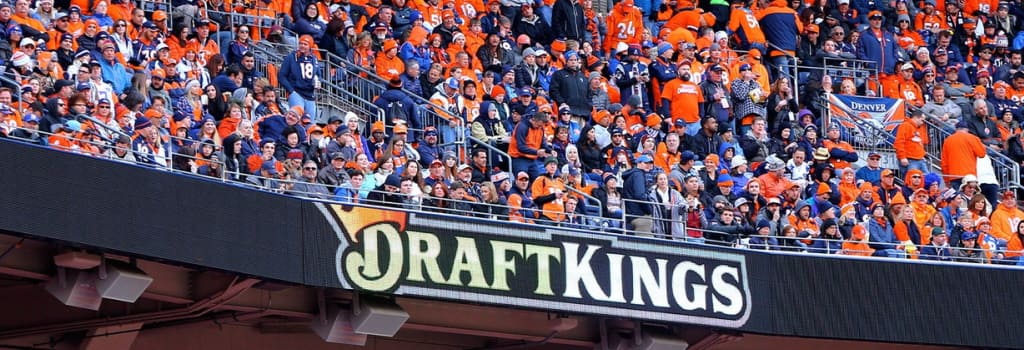

In recent years, the presence of advertisements for US gambling brands in US stadiums has become increasingly prevalent, reflecting the evolving landscape of sports marketing and sponsorship.
This trend has been fueled by the legalization of sports betting in various states across the country, such as New Jersey, Pennsylvania, and Nevada, following the landmark Supreme Court decision in May 2018, which overturned the Professional and Amateur Sports Protection Act (PASPA).
The presence of gambling advertisements in US stadiums has become increasingly prevalent in recent years, with the legalization of sports betting in various states across the country. While the focus has been on the impact of sports betting, the broader issue of gambling advertisements in these venues deserves attention.
The advertising of gambling brands in US stadiums is subject to a complex web of regulations at both the federal and state levels.
The valuable comments from Jackpot Sounds on legal gambling in the USA served as a basis for this article. Thus, legit gambling experts from Jackpot Sounds point to the fact that the Federal Trade Commission (FTC) and the Federal Communications Commission (FCC) play key roles in overseeing advertising practices, and ensuring compliance with laws related to truth in advertising, consumer protection, and fair competition.
Additionally, individual states have their own regulations governing the advertising of gambling services, including restrictions on content, placement, and targeting.
The partnership between US gambling brands and sports teams or leagues has proven to be mutually beneficial.
For example, prominent US sports leagues like the NFL, NBA, and MLB have inked lucrative sponsorship deals with leading gambling operators like:
These partnerships not only provide a significant revenue stream for the sports entities but also offer gambling brands a platform to reach a captive audience of sports fans, enhancing brand visibility and engagement.
Gambling brands have forged lucrative partnerships with US sports teams and leagues, providing a significant revenue stream for the sports entities.
For example, the NFL has struck deals with MGM, Caesars, FanDuel, and DraftKings as official sportsbook partners, generating an estimated $2.3 billion in annual revenue.
Stadium advertising allows gambling brands to reach a captive audience of event attendees, with highly visible advertisements throughout the venue creating brand familiarity.
This exposure is particularly valuable for gambling brands, as they can target specific demographics and promote their products to a large number of potential customers.
The presence of gambling advertisements in US stadiums raises important ethical considerations.
Critics argue that these advertisements can normalize gambling behavior and potentially lead to increased problem gambling among vulnerable populations, particularly young fans.
There are also concerns about the impact of gambling on the integrity of sports and the well-being of athletes.
The integration of gambling advertisements in US stadiums has reshaped the fan experience, blurring the lines between sports and entertainment.
Fans attending live events are now exposed to a diverse array of gambling promotions, from in-stadium signage to interactive betting kiosks, enhancing the overall atmosphere and excitement of the game.
Moreover, the rise of mobile sports betting apps has enabled fans to place bets conveniently from their seats, further deepening their engagement with both the game and the brand.
These stadiums showcase the growing presence of gambling advertisements in the NFL, reflecting the league's embrace of legalized sports betting and the potential revenue opportunities it presents.
However, the increasing exposure to gambling has raised concerns about the impact on fans, particularly those at risk of developing gambling problems.
Looking ahead, the advertisement of US gambling brands at US stadiums is poised to continue its upward trajectory, driven by the growing acceptance of sports betting and the expanding market opportunities.
However, this trend also raises important considerations about responsible gambling practices, consumer protection, and the potential impact on vulnerable populations. Stakeholders in the sports and gambling industries must navigate these challenges thoughtfully to ensure a sustainable and ethical advertising ecosystem.
The advertising domain for US gambling brands at US stadiums is poised for significant evolution, driven by emerging trends and facing notable challenges that will shape the industry in the coming years.
In navigating these future trends and challenges, stakeholders in the advertising of US gambling brands at US stadiums must prioritize innovation, responsibility, and consumer welfare to ensure a sustainable and mutually beneficial relationship between sports, gambling, and fans.
By embracing change, fostering transparency, and upholding ethical standards, the industry can continue to evolve and thrive in a dynamic and competitive landscape.
The advertisement of US gambling brands at US stadiums represents a dynamic intersection of sports, marketing, and regulation, shaping the landscape of sports sponsorship and fan engagement in the digital age.
As this trend evolves, it is essential for all stakeholders to collaborate proactively to uphold industry standards, promote responsible gambling behavior, and deliver value to both fans and brands in a rapidly changing marketplace.
The 91 biggest football stadiums in Europe. From Manchester to Munich, Villa Park to Valencia - each one with a capacity over 40,000
23 interesting things to do to pass the time until the football season restarts
All good things have to come to an end, and the same unfortunately has to be said for football stadiums too. This article looks at the grounds which are soon to host their last match, the stadiums whose days are numbered and where fans will be watching their football from next.
Taking my son to his first football match was one of the best experiences I've had as a father so far. I've written this article for Alex to read when he gets older.
